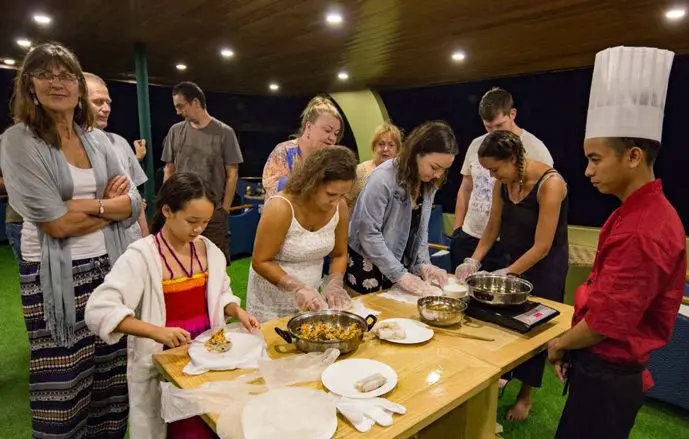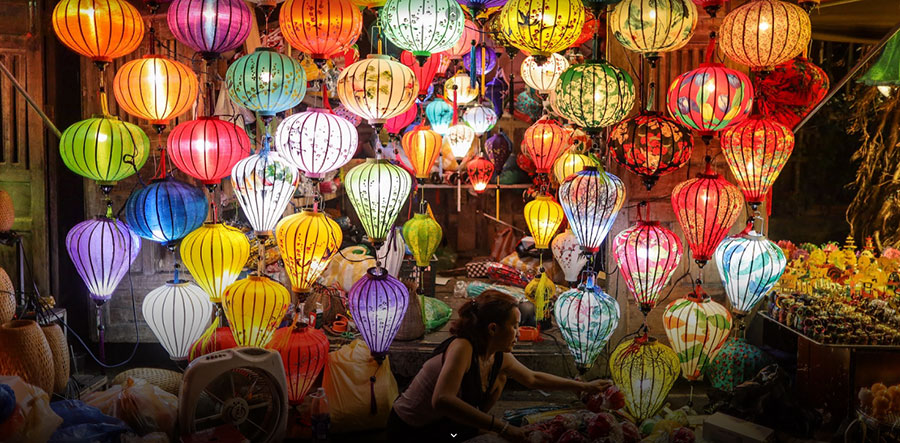Why the World Is Falling in Love with Vietnamese Bánh Mì
Vietnamese bánh mì is more than just a sandwich — it’s a cultural icon, a culinary masterpiece, and one of Vietnam’s most beloved street foods. Across continents and cultures, this humble creation has won the hearts of food lovers with its perfect balance of flavors, textures, and history. But what exactly makes bánh mì so special, and why is the whole world craving it?

The Origins of Vietnamese Bánh Mì: A Cultural Fusion
The story of bánh mì begins in the late 19th century, during French colonial rule in Vietnam. The French brought baguettes into the country, introducing locals to the concept of crusty bread. However, it wasn’t until the 1950s that Vietnamese bakers and street vendors began to put their own spin on the French baguette.
At small shops like Hòa Mã in Saigon, locals began stuffing the bread with a variety of Vietnamese ingredients: pâté, cured meats, pork floss, pickled vegetables, chili, fresh herbs, and sauces. This innovative combination of East and West flavors gave birth to the uniquely Vietnamese version of the sandwich — bánh mì as we know it today.
Unlike the dense French baguette, the Vietnamese bánh mì is lighter, crispier, and airier, thanks to the use of rice flour and Japanese-style ovens that emerged in the 1970s. This texture, along with the vibrant mix of fillings, created a sensory experience that quickly became a staple across Vietnam.
The Global Rise of Bánh Mì
After the end of the Vietnam War in 1975, Vietnamese communities began to grow around the world, particularly in the United States, Australia, France, Canada, and Germany. With them came their cuisine — and bánh mì quickly gained international attention.
A defining moment came in 2009, when celebrity chef Anthony Bourdain called the bánh mì from Hội An’s Bánh Mì Phượng “the best sandwich in the world.” Since then, bánh mì has appeared in food documentaries, travel shows, and international magazines. It has earned a spot in the Oxford English Dictionary, and was ranked by TasteAtlas as one of the top sandwiches in the world.
Today, you can find bánh mì in food trucks, fusion restaurants, local bakeries, and high-end dining establishments — from New York to Tokyo, from Paris to Melbourne.
What Makes Vietnamese Bánh Mì So Irresistible?
The magic of Vietnamese bánh mì lies in its perfect balance of texture and flavor. The exterior of the bread is golden and crunchy, while the inside is soft and airy. Each bite offers a harmonious mix of savory, sweet, sour, spicy, and fresh.
A classic bánh mì typically includes:
-
A crispy baguette
-
House-made pork pâté or mayonnaise
-
Vietnamese cold cuts (chả lụa, head cheese, pork belly)
-
Pickled carrots and daikon
-
Cucumber slices
-
Fresh cilantro and chili
-
Optional sauces like soy, fish sauce, or chili oil
This combination creates an explosion of taste — rich and complex yet light and refreshing. No two bánh mì are exactly alike, and that’s part of its universal appeal.
A Sandwich for Everyone: Affordable, Versatile, and Delicious
One of the reasons bánh mì is loved globally is its incredible versatility. From classic pork bánh mì to versions with grilled chicken, beef, sardines, tofu, or even egg and cheese, this sandwich can be adapted to suit any palate.
There are even creative modern takes, like:
-
Vegan bánh mì with marinated mushrooms or tempeh
-
Fusion bánh mì with Korean bulgogi or Mexican carnitas
-
Dessert bánh mì with sweet fillings like coconut jam or condensed milk
-
Innovative breads made with dragon fruit, cacao, or whole wheat
Moreover, bánh mì is affordable and portable, making it an ideal choice for breakfast, lunch, or a midday snack. In Vietnam, it’s sold everywhere — from street carts and markets to cafes and bakeries — usually for less than the cost of a cup of coffee.
More Than Food: Bánh Mì as a Cultural Symbol
Bánh mì has come to represent more than just nourishment. It’s a powerful symbol of Vietnamese creativity, adaptability, and national pride. Just like phở, bánh mì is now a global ambassador for Vietnamese cuisine.
It’s often featured in cultural events, food festivals, international trade shows, and even global marketing campaigns. Vietnamese embassies abroad frequently include bánh mì in cultural showcases to introduce foreign audiences to the country’s rich culinary heritage.
Conclusion: A Bite of Vietnam, Loved Around the World
Vietnamese bánh mì is the perfect example of how food can transcend borders. Born from colonial history, shaped by local innovation, and celebrated worldwide, bánh mì continues to evolve — without losing its authentic soul.
Whether you’re enjoying it on a busy Saigon street or at a trendy bakery in London, a well-made bánh mì offers more than just flavor — it offers a taste of Vietnam’s heart, culture, and resilience.
So next time you’re hungry, skip the ordinary sandwich and treat yourself to a Vietnamese bánh mì. One bite, and you’ll understand why the world can’t get enough.








